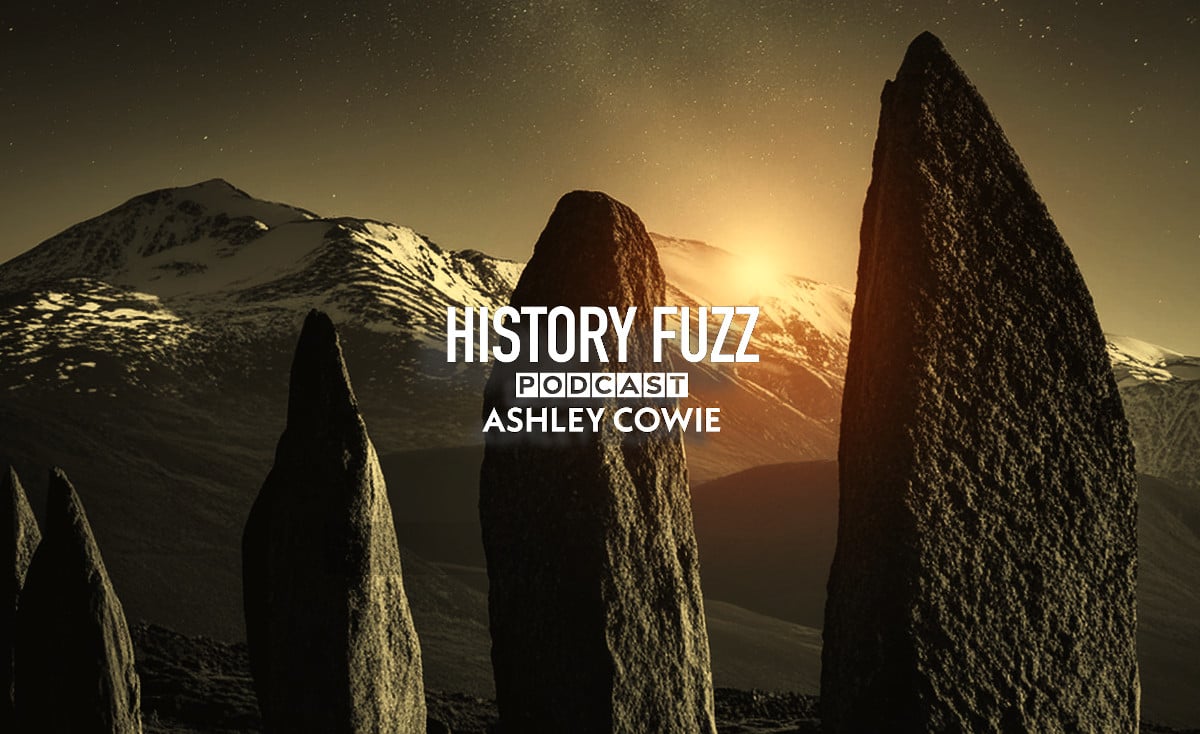
Podcast: History Fuzz: Episode 07: Professor Brian S. Bauer: Island of the Sun and the Inca ceque system
In this episode, Dr. Brian S. Bauer, a Full Professor in the Department of Anthropology at the University of Illinois at Chicago, takes us on a journey through his archaeological investigations of ancient South American landscapes. Specializing in archaeological and ethnohistorical methods, Dr. Bauer draws on decades of fieldwork to reveal how astronomy, architecture, and mythology were intricately woven into the spiritual life of the Inca. His research emphasizes the importance of understanding indigenous knowledge systems and how these systems were encoded in the physical landscape through complex alignments and sacred structures.

Figure 01: Episode graphic. Courtesy of the author.
Dr. Bauer begins by recounting his fieldwork at Lake Titicaca, where he investigated the Island of the Sun—an important ceremonial site for the Inca and earlier cultures. He describes the discovery of a remarkable solstice alignment, framed by two large stone pillars, which marked the rising and setting of the sun during key points of the solar year. This alignment, as Dr. Bauer explains, was more than a timekeeping device. It functioned as a ritual focal point, bringing together astronomy, mythology, and state ceremonies that reaffirmed the Inca’s divine connection to the cosmos. The careful placement of these pillars speaks to the precision and intentionality with which the Inca integrated natural features into their ceremonial architecture, reinforcing their cosmological worldview.
Building on this discussion, the episode delves into Dr. Bauer’s exploration of Cuzco’s ceque system - a highly complex network of shrines, sacred lines, and astronomical alignments radiating from the Inca capital. Dr. Bauer’s research on the ceque system is rooted in both archaeological investigation and a detailed analysis of fragmented Spanish colonial accounts, which offer partial but invaluable insights into this lost landscape. According to these sources, the ceques served as ritual pathways, linking over 300 shrines and ceremonial sites to Cuzco’s central temple, the Coricancha. These alignments were not only physical routes but also spiritual maps, encoding creation myths and organizing the Inca calendar.

Figure 02: Isla del Sol (Spanish for "Island of the Sun") is an island in the southern part of Lake Titicaca, in the La Paz Department of Bolivia. (Gregorof / CC BY-SA 3.0)
The ceque network has long been a subject of controversy among archaeologists, with debates centering on whether it represents a practical administrative system, a ceremonial framework, or both. Dr. Bauer presents his field observations and charting efforts, detailing how he worked to reconstruct this fragmented system from incomplete historical records. He also addresses the challenges of interpreting these alignments without projecting modern assumptions onto the past. His findings reveal a sophisticated blend of astronomy, mythology, and ritual practice, demonstrating how the Inca used alignments to manage both time and space in ways that reflected their cosmological understanding.
Listeners are encouraged to pair this episode with Episode 03, featuring Professor Charles Stanish, who offers complementary insights into Inca astronomy and the political dimensions of sacred architecture. Together, these two episodes provide a comprehensive look into how the Inca shaped their environment to reflect celestial patterns and religious beliefs. Dr. Bauer’s account builds on Stanish’s work by delving deeper into the intersection of astronomy and mythology, offering new perspectives on how the Inca connected their ceremonial practices to the movement of the stars and the cycles of the sun.





